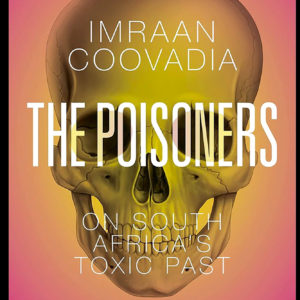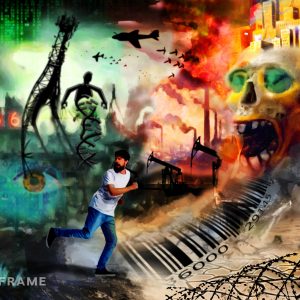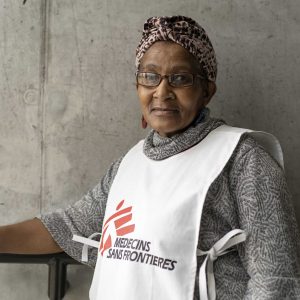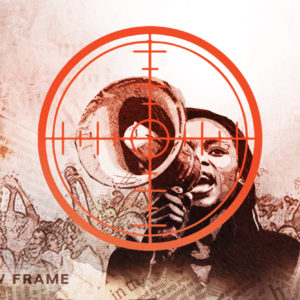Long Read | Poison and warfare
Imraan Coovadia’s new book connects the programmes of poisoning in Rhodesia and South Africa in five essays about the circumstances and men at the centre of their making.
Author:
13 October 2021

On Monday 10 August 2015, my father suddenly died. When I got to my village in rural Mhondoro – 80km south of Harare, where he had died and would be buried – it was to rumours that he had drunk poisoned tea prepared by his clanswoman. If true, my father had suffered the same fate as his maternal grandfather, who died after drinking beer laced with poison – probably crocodile bile, the poison of choice in domestic settings in Zimbabwe.
It’s rather strange that this happened to my father. When we started drinking together in the late 1990s, one of the abiding lessons he imparted to me was to always be wary when enjoying a drink with others, and never leave my drink unattended. If I had to go to the bathroom, it was advisable to first finish the drink and get a fresh one on my return.
It was the comparable fates of my father and his grandfather that preoccupied me as I read the essay “Rhodesian Poison”, the first of five in The Poisoner: On South Africa’s Toxic Past, 1973-2020.
The Poisoner is a new work of non-fiction by writer and scholar Imraan Coovadia. He is the director of the writing programme at the University of Cape Town and the author of several novels, including Tales of the Metric System and High Low In-Between, the essay collection Transformations and the monograph Revolution and Non-Violence in Tolstoy, Gandhi, and Mandela.
Related article:
Anchor essay “Rhodesian Poison” is followed by “The Principals”, about Wouter Basson and his Project Coast biological and chemical weapons programme. The third essay, “Lothar’s Potion”, is about chemist and senior cop Lothar Neethling, his expertise in poisons and his role in the deaths of South African freedom activists. The essay “Africa’s Solution” recounts the HIV and Aids debacle, and the tragedy of the many who died as then president Thabo Mbeki queried the accepted science. Final essay “Radio Potato” is concerned with the post-1994 afterlife of the toxic culture of wariness and mistrust that first grew in the ANC’s guerrilla camps in Angola and Zambia.
I call “Rhodesian Poison” the anchor essay not only because in terms of theme and chronology it holds the book together, but also because Rhodesia is some kind of ancestor to its bigger, more powerful southern neighbour. Without the input of Rhodesian scientists, South Africa’s biological and chemical weapons programme – indeed its whole counterinsurgency war – would probably have taken another trajectory with a different cast of characters.
It’s roughly the same point American historian Luise White makes in her latest book on Rhodesia, Fighting and Writing: The Rhodesian Army at War and Postwar, when she writes, “Some of the prominent murderers of the South African state served in Rhodesia and credited their time there with how they learned to fight.” In the region, Rhodesia is the beating heart of white supremacy’s rogue fightback to hold on to its privileges.
Poisons as warfare
In “Rhodesian Poison”, Coovadia traces the use of poisons as warfare to the years 1973 and 1976, when Rhodesian scientists, technicians and the military began collaborating to develop secret weapons to use against Zimbabwean freedom fighters.
As in the Shona adage about a healer’s alternate identity being that of a killer, at the centre of the Rhodesian programme was Robert Symington, the Edinburgh-born medical doctor, professor of anatomy and head of the University of Rhodesia’s medical school. Symington – who reported to PK van der Byl, Rhodesia’s Cape Town-born minister of defence – was able, with a team of about two dozen people, to turn agricultural chemicals and insecticides into weapons such as thallium, parathion, ricin and other poisons. He supplied these to Rhodesia’s army units, especially the Selous Scouts, a counterinsurgency unit of the Rhodesian security forces. The relatively low cost of the programme is why biological and chemical weapons are sometimes called the poor man’s atomic bomb.
Liquid parathion was dried, ground into powder and brushed on to shirts, jeans and sometimes snacks such as mopani worms. These items were then given to obliging shopkeepers and other people in contact with guerrillas, who would hand them over to the unsuspecting victims. As soon as the substances were absorbed into the bloodstream, excruciating deaths took place a few days after loss of hair, blindness, suppurating sores and other conditions.
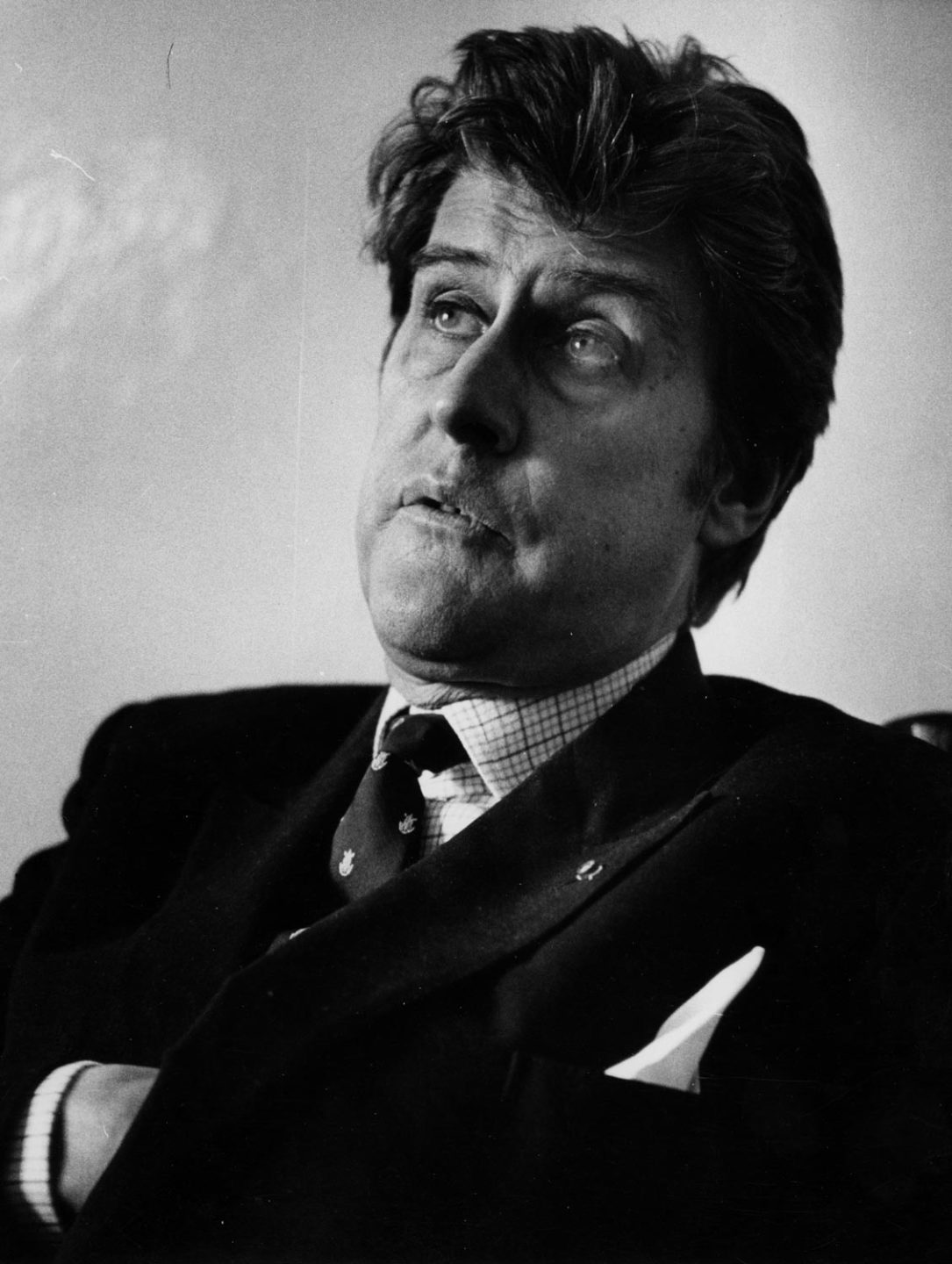
Thallium – a heavy metal toxin with no colour, taste or smell and therefore preferred by poisoners – was injected into tins, bottles, corned meat, bottles, even toothpaste tubes and pills. The initial symptoms were fever, headaches and shakes, before they were “bleeding uncontrollably out of every hole in their bodies”.
The numbers of those who died in the toxicological warfare were significant and in some months, more guerrillas died from poisoning than firefights. In 1977, for instance, poisons reportedly killed 800 guerrillas. But it wasn’t just guerrillas who were dying, sometimes it was civilian women and children. That same year, doctors in Salisbury (now Harare) and Bulawayo observed a steep rise in poisonings with parathion identified as the toxin.
Coovadia doesn’t go into how this was happening, but White helpfully explains. According to a secret inquiry, “the shopkeepers and agents on whom Special Branch relied to make sure the poisoned garments went to guerrillas and guerrillas alone not only grossly exaggerated guerrillas’ demand for certain items but often had no relationships with guerrillas and simply took advantage to sell clothes they had not purchased”.
In addition to his work in the production of parathion and thallium, Symington might also have been involved in the industrial production of cholera and possibly anthrax, a bacterial disease that attacks livestock and is transmissible to humans. To this day, outbreaks of cholera and anthrax in Zimbabwe are common, a situation exacerbated by former president Robert Mugabe’s mismanagement of public health institutions, water purification systems and veterinary services.
South African connection
Rhodesia’s other gift to its southern neighbour was the export of its expertise and, at the end of the Rhodesian era, the emigration of some of its top scientists to South Africa. Unsurprisingly, Symington got a job at the University of Cape Town in 1981.
If Rhodesia was the biological parent for Project Coast, the United States was its caring foster parent. In 1984, then president Ronald Reagan’s administration shipped eight consignments of Ebola, Marburg virus disease and Rift Valley fever to Pretoria, biological agents that gave the regime, in Coovadia’s words, “a devastating option, short of nuclear war, against neighbouring states that harboured its enemies”.
Related article:
Basson was one of Symington’s students at the University of Rhodesia. Most South Africans didn’t know anything about the secretive programme he headed until Basson’s arrest in Pretoria in January 1997, in a sting operation. He was arrested after handing his business partner a bag containing 1 040 Ecstasy pills.
Within three years of Basson joining the South African Defence Force as a 28-year-old medical officer in 1979, he had risen to the rank of lieutenant and was a specialist adviser at Defence headquarters. By 1988, he was a brigadier tasked with medical military research. Because South Africa didn’t want to be seen as a rogue state like Rhodesia, it signed treaties such as the Geneva Protocol and the 1972 Biological Weapons Convention. As such, South African political elites preferred not to know exactly what their foot soldiers were up to. Their hands-off approach allowed Basson to register civilian companies over which the military high command, let alone the political class, had no oversight. He became extremely wealthy as he falsified receipts and conducted other accounting chicanery with the funds he received from the treasury.
Drugs training
It would be a gross simplification to say that all Project Coast accomplished was European villas, Swiss bank accounts and other perks for Basson. His moniker of Dr Death was hard earned.
Captured guerrillas, no longer of use after having given up information, were sometimes dropped into the Atlantic Ocean from a helicopter. In one account, military pilot Johan Theron had to strangle a prisoner when a tranquiliser dart failed to sedate him while another pilot kept the helicopter on course. In another, Theron had to strangle six men to death after poisons failed to work properly, leaving him “totally traumatised”.
This is where Basson’s expertise in poisons was required. He flew to then South West Africa (Namibia), where he demonstrated the appropriate use of the drugs. After Basson’s tutorial on Tubarine and Scoline – two drugs commonly used in surgery that cause suffocation at higher than recommended doses – Theron was able to kill and dispose of the bodies of hundreds of turned guerrillas. “Things went more smoothly … They passed away more peacefully.”
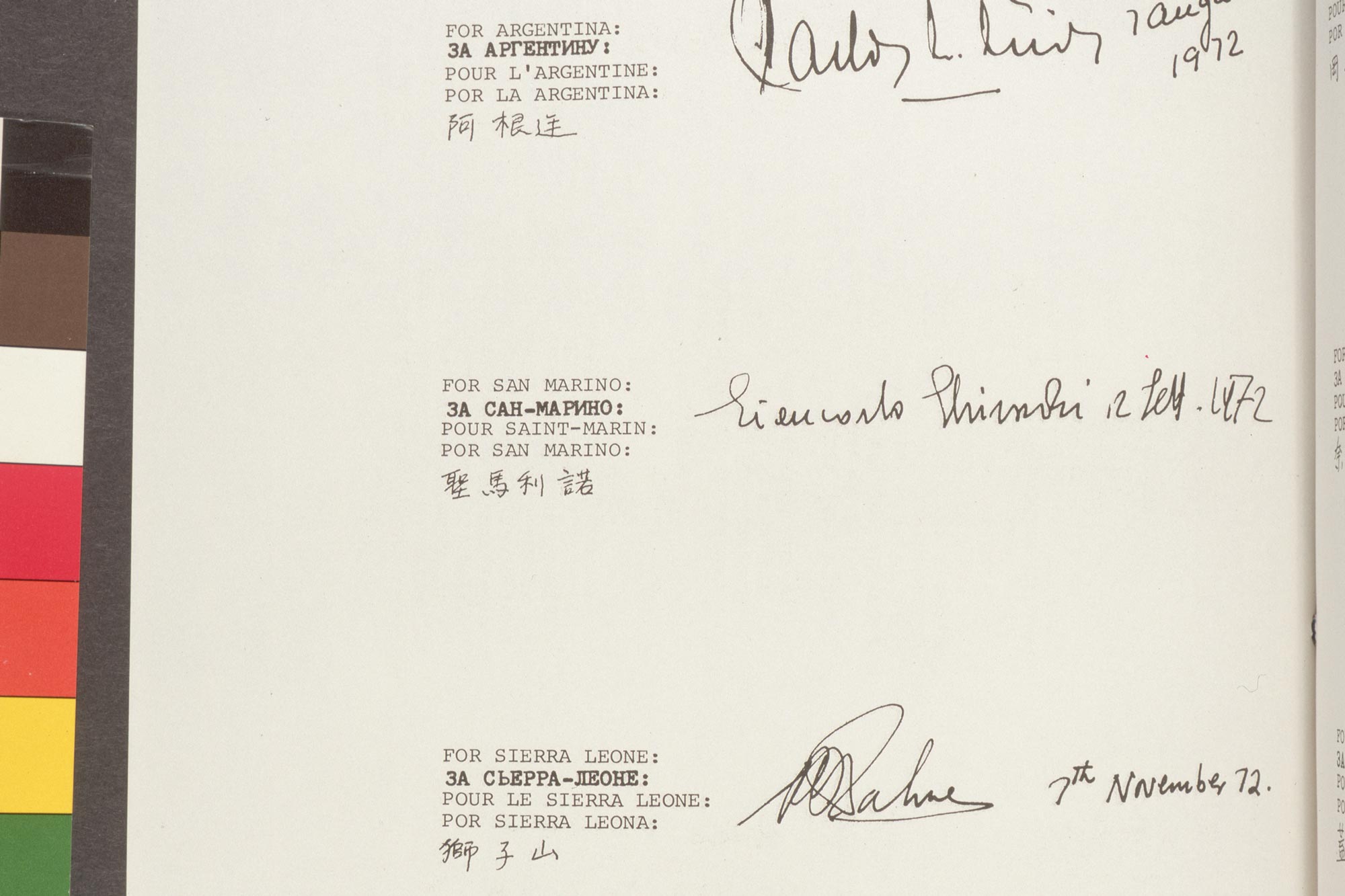
During the transition to democracy, Basson’s unit was tasked with making Ecstasy. In theory, it could be used for crowd control in aerosol form. Neethling, deputy police commissioner and a Basson collaborator, told the Truth and Reconciliation Commission that “if I could give Ecstasy to every person, he will not make war, but love. Then I can, in a matter of 10 minutes, change his whole spiritual condition.”
Neethling’s view did not pan out as the transition was particularly bloody, especially in KwaZulu-Natal and Gauteng. And it was this Ecstasy that Dr Death was arrested trying to hawk. “I just can’t believe that he would stoop so low as to sell drugs,” said a former colleague of Basson’s.
No small role
In the popular imagination, Basson has come to be the avatar of the state’s biological and chemical weapons programme. Yet, some could argue that Neethling’s role was no small one. “Lothar’s Poison” tries to situate Neethling in the architecture of the apartheid regime’s death squads.
Born Lothar Paul Tietz in Germany, Neethling moved to South Africa after being adopted as a war orphan. He studied for his chemistry doctorate at the University of California in the US and on his return was tasked with establishing the national forensics laboratory.
Related article:
Five men died in 1981: Lawyer Griffiths Mxenge and activists Siphiwo Mthimkhulu, Peter Dlamini, Selby Mavuso and Sizwe Kondile. These killings and the subsequent deaths of Griffiths’ wife Victoria Mxenge, also a lawyer, and attorney Bheki Mlangeni were all connected in one way or another with Neethling. Apartheid enforcer and murderer Captain Dirk Coetzee would later say of Neethling: “Just as I was the murderous link, so Neethling was the poisoning link in the whole chain.”
Before a Vlakplaas police hit squad stabbed Griffiths to death, they first silenced the Mxenge’s dogs by killing them with poison obtained from a unit under Neethling’s control.
Lothar’s poisons were also used on detainees; Mthimkhulu was apparently poisoned while in police custody. In April 1982, he sued the police minister for his poisoning. But he and a friend were drugged, shot, burned and their remains thrown in the Fish River before the case went any further.
Thankfully, Lothar’s poisons and Basson’s potions were never used to control the Black population, which far outnumbering whites was a scary prospect for the coloniser. “Whilst we have about 1 400 000 human beings in this colony,” Cape Colony prime minister Cecil John Rhodes once darkly mused, “one million of them are Black and only 400 000 white. It is a very pleasing amusement to keep on adding to the numbers of human beings, but it is a question for you to consider whether we should increase them with those of a Black skin.”
Masterful connections
The genius of Coovadia’s book is that it makes connections we ordinarily wouldn’t make.
Willie Hartzenberg, the judge who eventually acquitted Basson of the drug-dealing charges, was the same judge involved in the decision to force the Medicines Control Council to allow researchers to test the ability of nevirapine to prevent transmission of HIV through breast milk. (Coovadia’s father Hoosen, a paediatrician and breastfeeding specialist, was involved in the case).
The Medicines Control Council appointed by the Mbeki administration was stalling, refusing to accept the emerging consensus from mainstream scientists and a decision by its appeal committee to allow the trials to take place. It was Hartzenberg, on the right side of history this time, who ruled against further appeals and so the nevirapine study was approved on 30 July 2007, after four years of litigation.
Related article:
The state’s reluctance to give antiretrovirals to mothers with HIV – a quarter of the pregnant women turning up at public health facilities – extended to others with the virus. “A virus cannot cause a syndrome,” Mbeki declared. But he didn’t show the same scepticism about potions from the fringes of the medical field that claimed to cure HIV and Aids.
When Nelson Mandela called for public hospitals to make antiretrovirals available, he was dismissed out of hand and the toll was a heavy one. “In 2004 alone, half a million in South Africa contracted the disease and 300 000 died, more than 40% of the total mortality in the country. Life expectancy in South Africa fell more than in any other place on Earth that was not engaged in large-scale combat operations.”
Folk culture
The death tolls in the last essay, “Radio Potato”, are not as heavy as those from the so-called African solutions that Mbeki championed. The signals beamed from Radio Potato have their roots in the ANC guerrilla camps in Zambia and Angola. “Wage a relentless war against disruptors and defend the ANC … Beware of the wedge driver, the man who creeps from ear to ear … Beware of the wedge driver, comrades, watch his poisonous tongue,” then ANC president Oliver Tambo said at the party’s Morogoro Conference in 1969.
The ANC was vulnerable to penetration by agents of apartheid and “as is often the case, fear of infiltration by the enemy foreclosed the possibility of internal debate and difference”. The unfortunate consequence was an internal culture in which dissent was considered subversive and in which dissidents were sometimes executed or poisoned. Although the seeds of the culture are in the guerrilla camps, its reverberations are felt in the present. Take, for instance, the strange case of the alleged poisoning of Jacob Zuma.
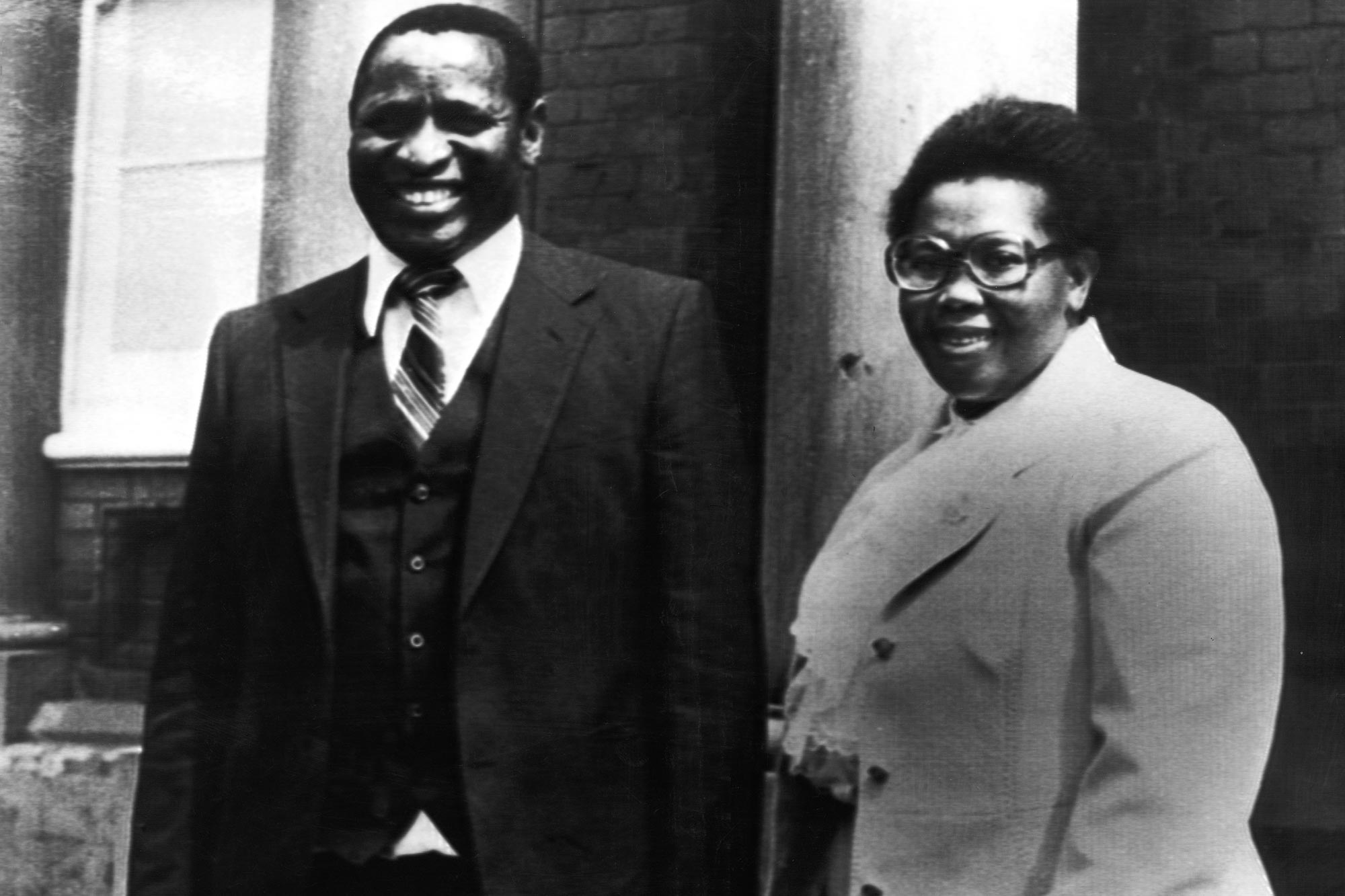
When Zuma was asked who poisoned him, he pointed at “they”. Once he mused, “I nearly died because they did poison me. They managed to find someone close to me and I know it. I was dead.” Another time he said, implausibly, “I was poisoned and almost died just because South Africa joined Brics [Brazil, Russia, India, China and South Africa].” The someone close to him is his estranged wife, Nompumelelo Ntuli. And yet prosecutor Elaine Zungu, in dismissing the case against Ntuli after more than four years, said: “There is no evidence that Mr Zuma was poisoned.”
It wasn’t only Zuma who was allegedly poisoned. During his second term as president, Coovadia writes, stories of poisoning “became established in the folk culture of the ruling party”. Deputy president David Mabuza is also said to have been poisoned. “In almost every case, the politicians who told stories of poisoning, or believed that they had been poisoned, belonged to the faction headed by Zuma and [Ace] Magashule. Their accusations seemed to be covert (and at times) overt attacks on the [Cyril] Ramaphosa faction.”
The poison of choice
In conclusion, Coovadia says that by the metrics of modern war, the numbers of those killed using poisons made by Symington, Neethling and Basson are moderate, but the paranoia the phenomenon sowed in Zimbabwe and South Africa is seen in the conspiratorial culture of Zanu-PF and the ANC. I have heard that at the height of the battle to succeed Mugabe, no one dared eat at funerals, rallies or other public gatherings for fear of being poisoned.
In Zimbabwe in the 1980s and 1990s, road accidents involving opposition political activists were thought of as hits ordered by Mugabe. But according to an academic paper by Blessing-Miles Tendi, a Zimbabwean scholar based at the University of Oxford in England, in the late Mugabe era there seemed to have been a move away from asphalt, gore and twisted metal and towards poisoning political opponents. What came to be preferred were slow-acting poisons imported from Kazakhstan, “which work on you over two or three years so that it looks like it’s some other disease”.
Related article:
Mugabe’s successor Emmerson Mnangagwa, who allegedly ate a poisoned ice cream in 2017, is said to eat only takeaways in public – food he orders spontaneously so as not to give his enemies time to plot.
Tragically, forgotten in the conspiracies of these liberation movements are the ordinary people who have died. The tens of thousands of Ndebele that Mugabe killed in the genocide in Matebeleland and the hundreds of thousands who died needlessly of HIV and Aids as Mbeki played at being a scientist.

